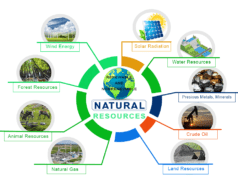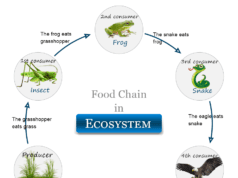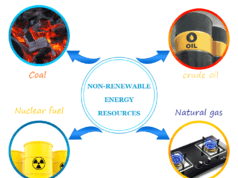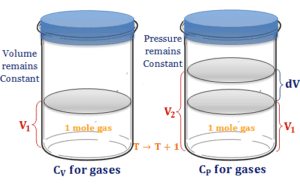What is Renewable Energy?
Renewable energy sources such as hydroelectric, wind, solar, biomass, and geothermal energy are the main examples of naturally replenished energy resources that we used widely in our daily lives. The use of renewable energy sources increases due to the high level of environmental pollution created by non-renewable sources. All sources of renewable energy are not beneficial for the earth’s environment and they are also very expensive to use. For example, hydroelectric energy and biomass energy can affect the lives of wildlife.

Hydroelectric energy and biomass energy create different types of climate change in our environment. The energy comes from non-renewable sources emitted carbon dioxide, sulfur dioxide, and other pollutants in our enviorment.
Renewable and Non renewable Energy
The energy comes from fossil fuels like coal, petroleum, and natural gas or hydrocarbons are used mainly to generate electricity. These are the main non-renewable energy resources of the world.
Due to limited resources of non-renewable energy and the large demand for electricity, these resources do not meet the global demand in the middle of the century. Therefore, we need to grow renewable energy resources like hydroelectric, wind, solar, biomass, and geothermal energy.
The combustion of fossil fuels also has a negative effect on our earth’s environment. The burning of fossil fuels (coal, wood, oils, and natural gas) in power plants or engines of vehicles emits different types of air pollutants. The pollutants like carbon monoxide, carbon dioxide, nitrogen dioxide, sulfur dioxide, unburnt particles of matter, and toxic chemicals or heavy chemical elements like mercury, chromium, and arsenic impact negatively on our environment.
The emission of these pollutants causes acid rain (responsible for water pollution and soil pollution), the greenhouse effect that causes global warming.
Renewable Energy Sources
- Now become, renewable energy sources are a more important power source in the world. According to the world report, it contributes about 21 percent to different types of global activity like heating or cooking, and about 24 percent is used for the generation of electricity.
- According to a 2015 report, about 16 percent of world electricity comes from hydroelectric power plants, and about 6 percent of electricity comes from other renewable energy sources like solar, wind, and geothermal energy.
- Nuclear power is also considered a renewable energy resource for electricity generation due to the low emission of carbon dioxide or nitrogen dioxide. According to some energy analysts, it is not a clean source of energy due to radioactive pollution.
Renewable Energy Sources Examples
The main examples of renewable sources which we use widely in our daily life include,
- Solar energy
- Wind energy
- Hydroelectric energy
- Geothermal energy
- Biomass energy energy
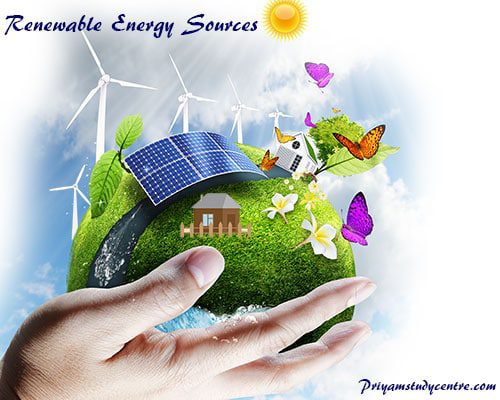
Different types of such renewable resources and their advantages are given below the topics,
Renewable Hydroelectric Energy
Hydroelectric power or hydroelectricity is the source of renewable or clean energy that produces or converts the potential energy to electrical energy by falling water into turbines. A hydroelectric power plant has a reservoir or dam which controls the flow of water from the reservoir. The water from the reservoir is used to turn the blades of turbines to generate electricity for global customers.
Due to many advantages, about 71 percent of renewable energy comes from hydroelectric power plants. The United States, Canada, Brazil, China, and Russia are the leading hydropower producers in the world.
It also negatively affects our environment. For example, large dams can affect our river’s ecosystem and harm the lives of humans and animals.
Hydroelectric Power Sources
Water reservoirs or dams are not only the source of hydroelectric power. Different types of tidal, and wave energy projects around the world generate electricity for global demands.
Less than one percent of renewable power (about 500 megawatts) comes from marine projects around the world. The United Kingdom is the leading country in the wave and tidal power generation process. The world-first marine energy test faculty was established in 2003 by the United Kingdom, Scotland, and the European Marine Energy Centre (EMEC).
Renewable Energy from Wind
Wind energy or wind power is the renewable source of electricity produced by the wind turbines of our globe. Recently due to limited resources of fossil fuels and increasing global pollution, we have increased the capacity of wind energy in the world.
The United States, China, and Germany are the leading countries for wind energy generation. About 40 percent of electricity demand in Denmark is fulfilled by wind energy and about 20 percent in Ireland, Portugal, and Spain is fulfilled by wind energy resources.
Advantages of Wind Energy
- Wind energy is the low-cost energy source in the world due to fuel-free sources and running over a long time about 20 years.
- It creates jobs for employers. For example, more than 100,000 workers and turbine technicians work in the United States wind project.
- Wind energy does not pollute our environments like power plants which are run by fossil fuels (coal, natural gas). It does not emit dangerous gases like carbon dioxide, carbon monoxide, nitrogen dioxide, and sulfur dioxide into our enviorment.
- The wind is a form of renewable solar energy because it forms by heating the atmosphere by the sun which blows wind or turbine to produce electricity.
Renewable Solar Energy Sources
Solar energy is the cleanest source of energy obtained from radiant light (electromagnetic spectrum radiation). The heat from the sun by using different types of technologies like photovoltaics, solar heating & cooling, and concentrating solar power. It converted solar power into thermal and electrical energy.
Advantages of Solar Energy
Germany, Italy, China, Japan, and the United States are the largest producers of solar renewable energy in the world due to their technologies and geographical location. The energy comes from solar technologies free from pollution. We use solar energy for different types of domestic and commercial purposes such as generating electricity, providing light, and heating water.
Present-day, different countries of the world use solar technologies to save their environment from pollution. It is also used due to limited resources of fossil fuels like coal, petroleum, and natural gas.
Renewable Energy from Biomass
Biomass uses by people since the first burning of wood for cooking or warming the environment where they live. Biofuels (alcohol and biodiesel), wood and wood waste, biogas like methane from landfills, and municipal organic wastes are the main sources of biomass energy. Like renewable solar energy, biomass is also used for producing electricity, heating water, uses as fuel for vehicles.
Advantage of Biomass Energy
- The use of biomass energy is more effective for our environment due to reducing the greenhouse effect.
- Burning of biomass and fossil fuel releases the same amount of carbon dioxide (CO2). Fossil fuel releases carbon dioxide uses in photosynthesis for a long time (millions of years) but biomass releases carbon dioxide to balance the carbon dioxide cycle of our environment.
Renewable Geothermal Energy
Geothermal energy is another source of renewable energy generated from the earth’s internal specific heat. Some countries of the world use geothermal energy for heating, cooking, and clean electricity generation carried by water or stream from the earth’s surface. Geothermal energy does not depend on the weather. Therefore, it uses the long term for global electricity demand.
Due to renewable sources, geothermal energy is useful or significant in fulfilling huge electricity demand in countries like Iceland, El Salvador, New Zealand, Kenya, Philippines, and more than 90 percent of the heating demand in Iceland.
Facts about Renewable Energy
More than 20 percent of the power demands of 30 countries of the world are fulfilled by renewable energy. Iceland and noway generate all the electricity from renewable sources such as solar, wind, hydroelectric, geothermal, and biomass energy.
Many countries of the world set up the goal to reach 100 percent renewable energy for their power demands in the future to save our enviorment.

